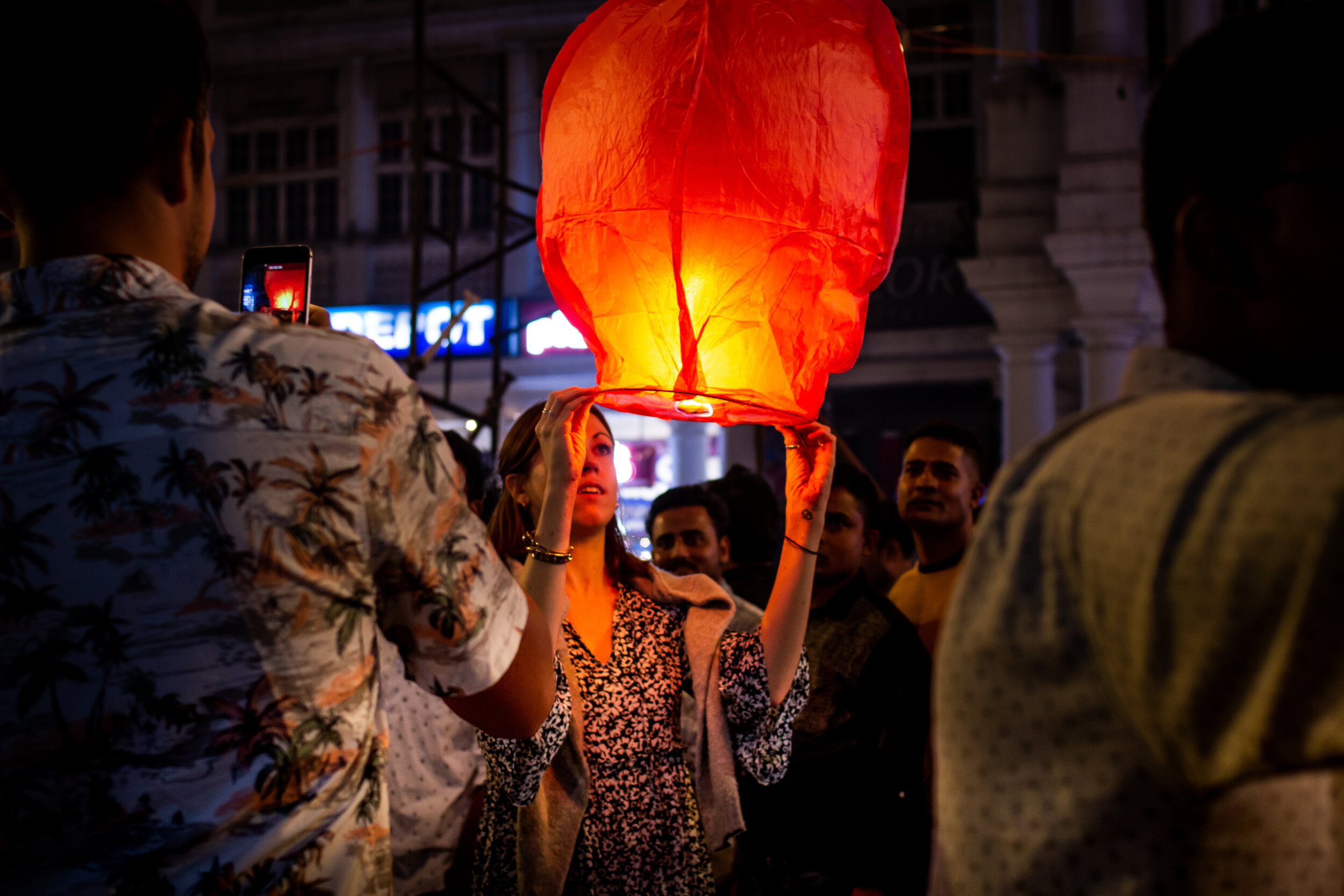In Photos: India Celebrates Diwali, The Festival of Light
DELHI — An estimated one billion people celebrated Diwali this weekend, one of the biggest Hindu festivals celebrated worldwide. The festival, which marks the victory of good over evil, light over darkness, is also celebrated by Sikhs and Jains.
Diwali is celebrated over a period of five days, with the main event falling on the third day, which this year was Oct. 27. The celebration continues for the whole week.
On Diwali, people decorate their homes with clay lamps and candles, called diyas, dress up and exchange sweets and presents, host parties, and shoot firecrackers. In large cities like Delhi, firecracker smoke often pollutes the city with a smog for days or weeks afterward.
The festival finds its origin in a Hindu mythological legend. Lord Rama along with his wife, Sita, had returned to his home city, Ayodhya, on this day after 14 years in exile. According to the myth, before his return, Rama defeated the ten-headed demon king, Ravana, who had kidnapped Sita. The people of Ayodhya celebrated his return with filling the streets with flowers and lighting clay lamps, symbolizing the victory of good over evil.
On the eve of Diwali, hundreds of people thronged the Lajpat Nagar market in New Delhi to shop for the festival. Photo by Avinash Giri.
Some people came with their whole family to have a good time in the market, which is famous for festival-related shopping. This is the first Diwali for 5-month-old Gurmehar Kaur. “We call her Nikki,” said her mother. Photo by Avinash Giri.
Along with clothes and gifts, people bought clay idols of Lord Ganesha and Goddess Laxmi. Photo by Avinash Giri.
These idols are sold in large numbers and employ thousands of migrant laborers from northern Indian states of Bihar and Uttar Pradesh, who make the idols with clay. Photo by Avinash Giri.
Although Diwali is a Hindu festival, Muslims could be seen in large numbers enjoying the holiday market. Photo by Avinash Giri.
Women get mehendi, also called henna, drawn made on their hands to adorn themselves for the festival. Photo by Avinash Giri.
Not everyone is fortunate enough to buy clothes or sweets for the festival. Many kids sell balloons in the market. Photo by Avinash Giri.
People go to India Gate, a prominent memorial in Delhi near the parliament, to enjoy Diwali with their family members and friends, even past midnight. Photo by Avinash Giri.
Diwali is a festival marking the victory of good over evil, light over darkness. People light clay lamps and candles to celebrate it. Photo by Avinash Giri.
People use colorful powders and pastes to create patterns called rangolis. Photo by Avinash Giri.
Diwali is celebrated based on a Hindu myth in which Diwali was first celebrated by people of Ayodhya after Lord Rama returned along with his wife after 14 years of exile. On Diwali, devotees visit temples to offer prayers and perform religious rituals. Photo by Avinash Giri.
Firecrackers are a staple of Diwali celebrations, but they have polluted the air to hazardous levels in the national capital in past years. This year, the Delhi government arranged a laser show at Connaught Place for a cracker-free Diwali. Photo by Avinash Giri.
One of the main attractions of the event was the performance of the band Indian Ocean. Hundreds of people came to watch the band perform. Photo by Avinash Giri.
People came in large numbers with their family members and friends. Photo by Avinash Giri.
Some Muslim women clad in burqas also enjoyed the event. Photo by Avinash Giri.
Many people also flew sky lanterns at Connaught Place in Delhi. Photo by Avinash Giri.
Avinash Giri is a Delhi-based independent journalist and Poynter-Koch fellow reporting for Religion Unplugged.
















